
漢德百科全書 | 汉德百科全书
 Egypt
Egypt
 Egypt
Egypt
 Beijing Shi-BJ
Beijing Shi-BJ
 Belgium
Belgium
 Hebei Sheng-HE
Hebei Sheng-HE
 Henan Sheng-HA
Henan Sheng-HA
 Jiangsu Sheng-JS
Jiangsu Sheng-JS
 Shandong Sheng-SD
Shandong Sheng-SD

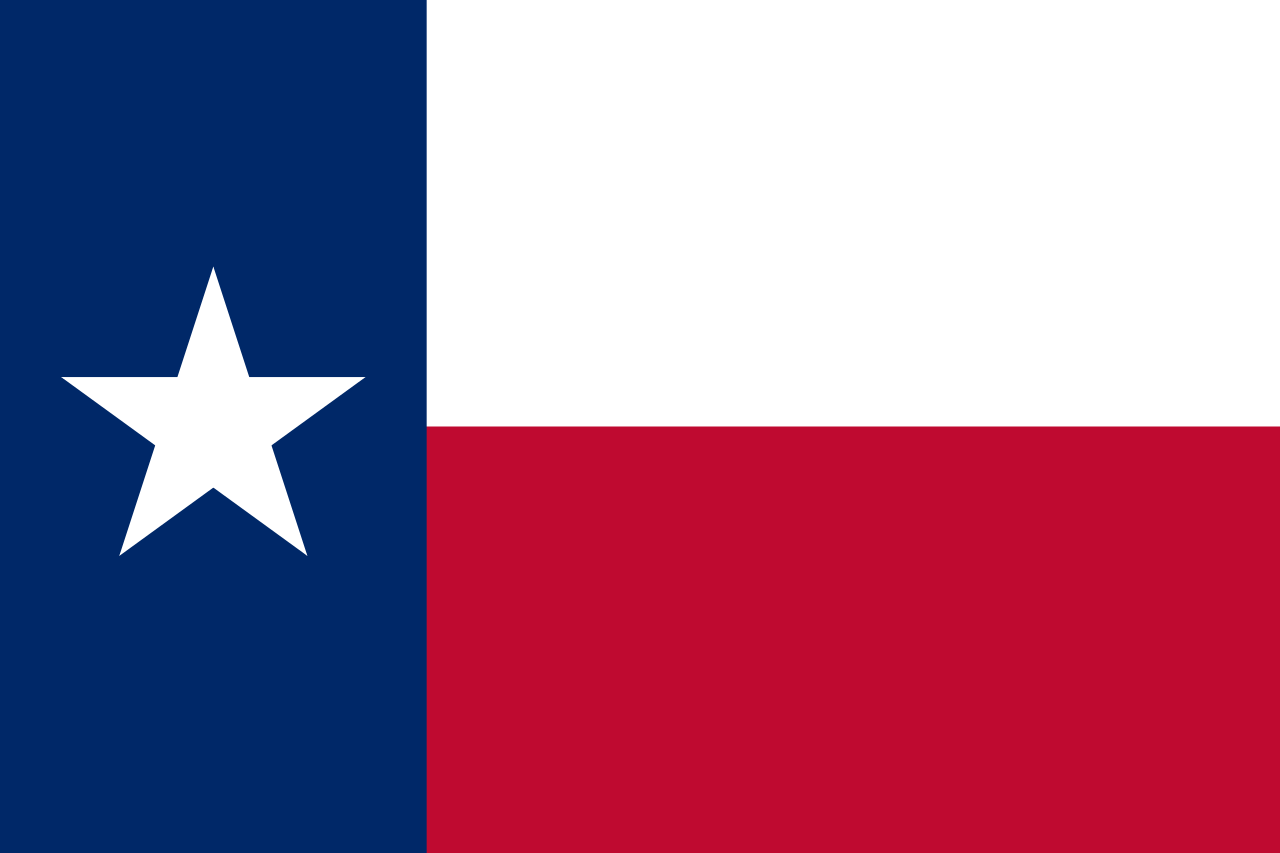 Texas-TX
Texas-TX

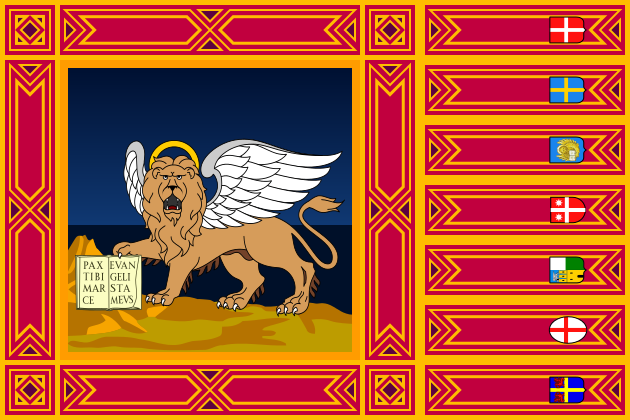 Veneto
Veneto

 Important International Organizations
Important International Organizations
 Zhejiang Sheng-ZJ
Zhejiang Sheng-ZJ
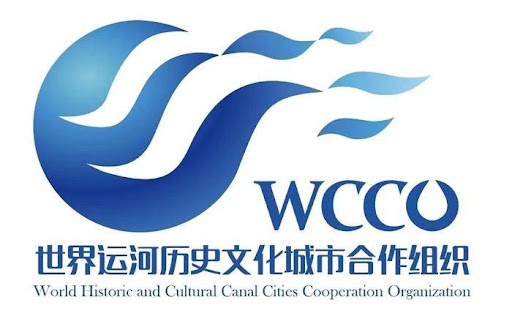
Die Organisation für die Zusammenarbeit zwischen historischen und kulturellen Städten des Weltkanals ist eine internationale Organisation ohne Erwerbszweck, die auf freiwilliger Basis von Kanalstädten und damit verbundenen wirtschaftlichen und kulturellen Einrichtungen aus der ganzen Welt gegründet wurde. Ihr Ziel ist es, "den Kanal als Bindeglied zu nutzen, um den wirtschaftlichen und kulturellen Austausch zwischen den Kanalstädten zu fördern, Entwicklungserfahrungen auszutauschen, eine für beide Seiten vorteilhafte Zusammenarbeit zu unterstützen und die gemeinsame Entwicklung und den Wohlstand der Kanalstädte zu fördern". Ziel der Organisation ist es, die gemeinsame Entwicklung und den Wohlstand der Kanalstädte durch Synergie, Kompatibilität und Komplementarität zwischen den Partnerstädten zu fördern, das Beste der Kanalkultur zusammenzubringen, die kulturellen Ressourcen der Kanäle zu integrieren, den kulturellen Wert der Kanäle zu erforschen, den kulturellen Austausch zwischen den Kanälen zu fördern und die Entwicklung der Kanalwirtschaft und der Kulturindustrie zu unterstützen.

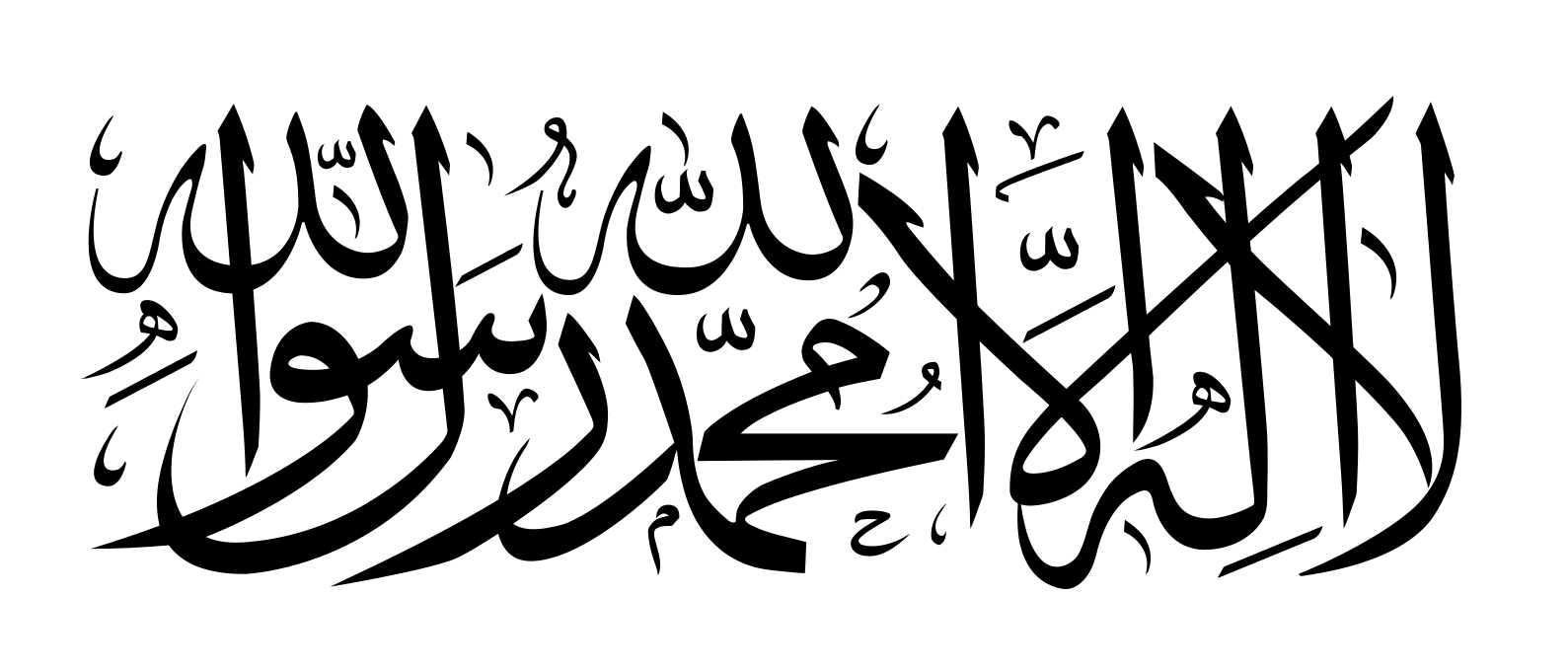 Afghanistan
Afghanistan
 Egypt
Egypt
 Argentina
Argentina
 Armenia
Armenia
 Azerbaijan
Azerbaijan
 Bangladesh
Bangladesh
 Beijing Shi-BJ
Beijing Shi-BJ
 Belarus
Belarus
 Belgium
Belgium
 Amber Road
Amber Road
 Bulgaria
Bulgaria
 Chile
Chile
 China
China
 Chongqing Shi-CQ
Chongqing Shi-CQ
 Germany
Germany
 Eritrea
Eritrea
 Fidschi
Fidschi

 Financial
Financial

 Financial
Financial
 *China economic data
*China economic data
 France
France
 Fujian Sheng-FJ
Fujian Sheng-FJ
 Gansu Sheng-GS
Gansu Sheng-GS
 Georgia
Georgia
 Greece
Greece
 Guangdong Sheng-GD
Guangdong Sheng-GD
 Guangxi Zhuangzu Zizhiqu-GX
Guangxi Zhuangzu Zizhiqu-GX
 Hainan Sheng-HI
Hainan Sheng-HI

 Hand in Hand
Hand in Hand
 Hebei Sheng-HE
Hebei Sheng-HE
 Heilongjiang Sheng-HL
Heilongjiang Sheng-HL
 Henan Sheng-HA
Henan Sheng-HA
 Hongkong Tebiexingzhengqu-HK
Hongkong Tebiexingzhengqu-HK
 India
India
 Indonesia
Indonesia
 Iraq
Iraq
 Iran
Iran
 Italy
Italy
 Japan
Japan
 Yemen
Yemen
 Jiangsu Sheng-JS
Jiangsu Sheng-JS
 Jilin Sheng-JL
Jilin Sheng-JL
 Jordan
Jordan
 Cambodia
Cambodia
 Kasachstan
Kasachstan
 Kenya
Kenya
 Kenya
Kenya
 Kyrgyzstan
Kyrgyzstan
 Laos
Laos
 Liaoning Sheng-LN
Liaoning Sheng-LN
 Madagaskar
Madagaskar
 Malaysia
Malaysia

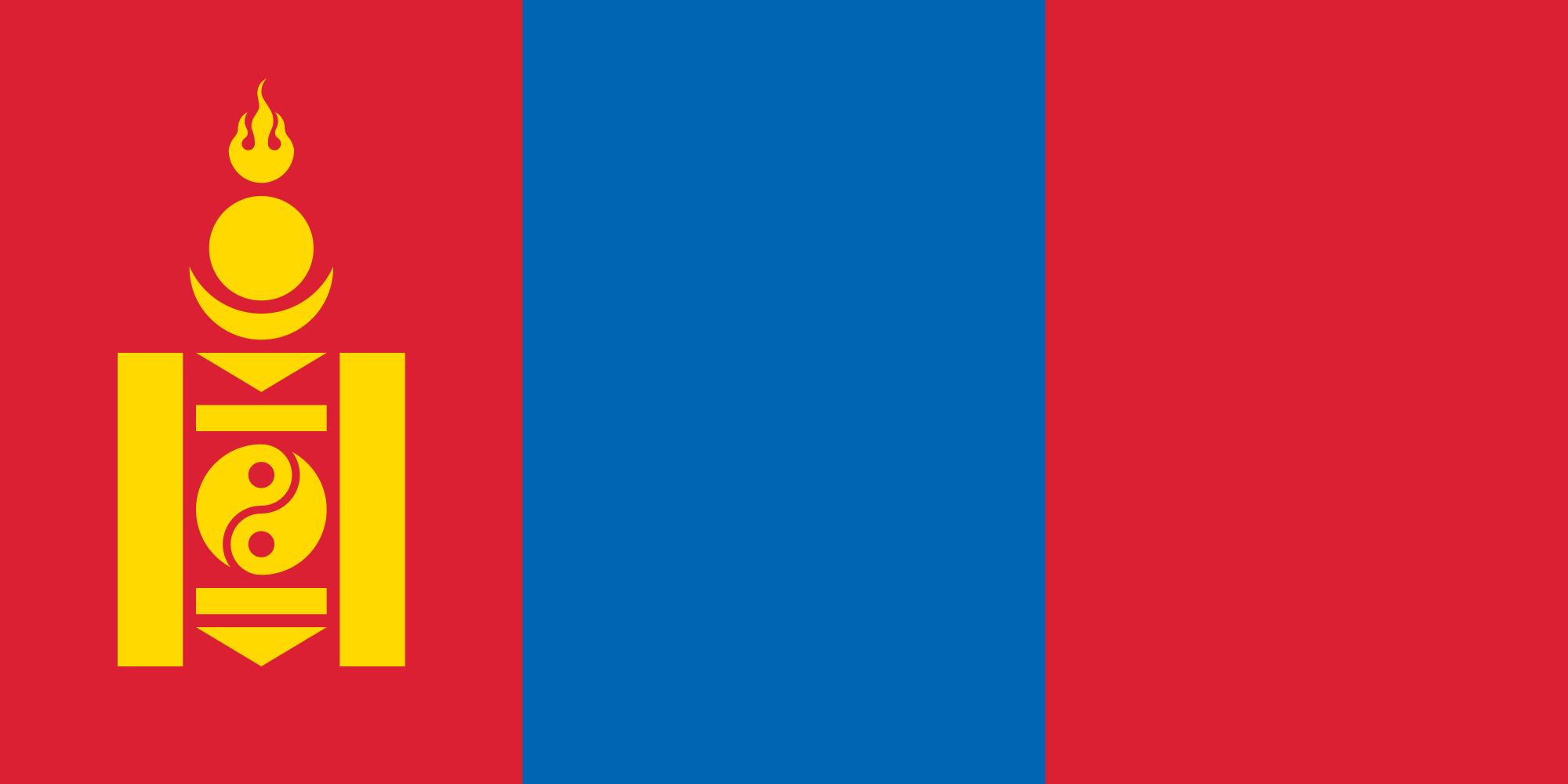 Mongolei
Mongolei
 Myanmar
Myanmar
 Nei Mongol Zizhiqu-NM
Nei Mongol Zizhiqu-NM
 Nepal
Nepal
 Netherlands
Netherlands
 Ningxia Huizu Zizhiqu-NX
Ningxia Huizu Zizhiqu-NX
 Ningxia Huizu Zizhiqu-NX
Ningxia Huizu Zizhiqu-NX
 Oman
Oman
 Austria
Austria
 Pakistan
Pakistan
 Philippines
Philippines
 Poland
Poland
 Portugal
Portugal
 Qinghai Sheng-QH
Qinghai Sheng-QH
 Republic of Korea
Republic of Korea
 Republic of the Sudan
Republic of the Sudan
 Russia
Russia
 Switzerland
Switzerland
 Silk road
Silk road
 Serbia
Serbia
 Serbia
Serbia
 Shaanxi Sheng-SN
Shaanxi Sheng-SN
 Shanghai Shi-SH
Shanghai Shi-SH
 Sichuan Sheng-SC
Sichuan Sheng-SC
 Singapore
Singapore
 Slovakia
Slovakia
 Somalia
Somalia
 Spain
Spain
 Sri Lanka
Sri Lanka
 South Africa
South Africa
 Syria
Syria
 Tajikistan
Tajikistan
 Taiwan Sheng-TW
Taiwan Sheng-TW
 Tianjin Shi-TJ
Tianjin Shi-TJ
 Tianjin Shi-TJ
Tianjin Shi-TJ
 Czech Republic
Czech Republic
 Czech Republic
Czech Republic
 Turkey
Turkey
 Turkmenistan
Turkmenistan
 Ukraine
Ukraine
 Hungary
Hungary

 Vacation and Travel
Vacation and Travel
 Uzbekistan
Uzbekistan
 United Kingdom
United Kingdom
 Vietnam
Vietnam

 World Heritage
World Heritage

 Economy and trade
Economy and trade
 Xinjiang Uygur Zizhiqu-XJ
Xinjiang Uygur Zizhiqu-XJ
 Zhejiang Sheng-ZJ
Zhejiang Sheng-ZJ
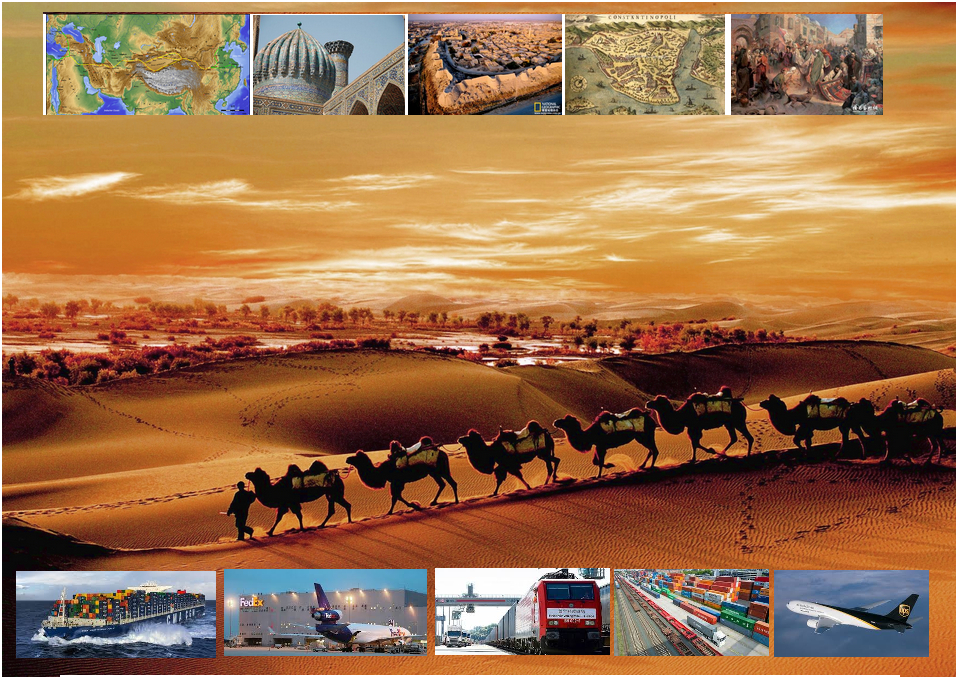
Als Seidenstraße (chinesisch 絲綢之路 / 丝绸之路, Pinyin Sīchóu zhī Lù ‚die Route / Straße der Seide‘; mongolisch ᠲᠣᠷᠭᠠᠨ ᠵᠠᠮ Tôrgan Jam; kurz: 絲路 / 丝路, Sīlù) bezeichnet man ein altes Netz von Karawanenstraßen, dessen Hauptroute den Mittelmeerraum auf dem Landweg über Zentralasien mit Ostasien verband. Die Bezeichnung geht auf den im 19. Jahrhundert lebenden deutschen Geografen Ferdinand von Richthofen zurück, der den Begriff 1877 erstmals verwendet hat.
Auf der antiken Seidenstraße wurde in westliche Richtung hauptsächlich Seide, gen Osten vor allem Wolle, Gold und Silber gehandelt.[1] Nicht nur Kaufleute, Gelehrte und Armeen nutzten ihr Netz, sondern auch Ideen, Religionen und ganze Kulturkreise diffundierten und migrierten auf den Routen von Ost nach West und umgekehrt: hierüber kamen z. B. der Nestorianismus (aus dem spätantiken Römischen Reich) und der Buddhismus (von Indien) nach China.[1]
Die 6.400 Kilometer[1] lange Route begann in Xi’an und folgte dem Verlauf der Chinesischen Mauer in Richtung Nordwesten, passierte die Taklamakan-Wüste, überwand das Pamirgebirge und führte über Afghanistan in die Levante; von hier wurden die Handelsgüter dann über das Mittelmeer verschifft. Nur wenige Kaufleute reisten auf der gesamten Route, die Waren wurden eher gestaffelt über Zwischenhändler transportiert.
Ihre größte Bedeutung erreichte das Handels- und Wegenetz zwischen 115 v. Chr. und dem 13. Jahrhundert n. Chr. Mit dem allmählichen Verlust römischen Territoriums in Asien und dem Aufstieg Arabiens in der Levante wurde die Seidenstraße zunehmend unsicher und kaum noch bereist. Im 13. und 14. Jahrhundert wurde die Strecke unter den Mongolen wiederbelebt, u. a. benutzte sie zu der Zeit der Venezianer Marco Polo um nach Cathay (China) zu reisen. Nach weit verbreiteter Ansicht war die Route einer der Hauptwege, über die Mitte des 14. Jahrhunderts Pestbakterien von Asien nach Europa gelangten und dort den Schwarzen Tod verursachten.[1]
Teile der Seidenstraße sind zwischen Pakistan und dem autonomen Gebiet Xinjiang in China heute noch als asphaltierte Fernstraße vorhanden (-> Karakorum Highway). Die alte Straße inspirierte die Vereinten Nationen zu einem Plan für eine transasiatische Fernstraße. Von der UN-Wirtschafts- und Sozialkommission für Asien und den Pazifik (UNESCAP) wird die Einrichtung einer durchgehenden Eisenbahnverbindung entlang der Route vorangetrieben, der Trans-Asian Railway.[1]
Die "Neue Seidenstraße", das "One Belt, One Road"-Projekt der Volksrepublik China unter ihrem Staatspräsident Xi Jinping umfasst landgestützte (Silk Road Economic Belt) und maritime (Maritime Silk Road) Infrastruktur- und Handelsrouten, Wirtschaftskorridore und Transportlinien von China über Zentralasien und Russland bzw. über Afrika nach Europa, dazu werden verschiedenste Einrichtungen (z. B. Tiefsee- oder Containerterminals) und Verbindungen (wie Bahnlinien oder Gaspipelines) entwickelt bzw. ausgebaut. Bestehende Korridore sind einerseits Landverbindungen über die Türkei oder Russland und andererseits Anknüpfungen zum Hafen von Shanghai, über Hongkong und Singapur nach Indien und Ostafrika, Dubai, den Suez-Kanal, den griechischen Hafen Piräus nach Venedig.[2]
Das Projekt One Belt, One Road (OBOR, chinesisch 一帶一路 / 一带一路, Pinyin Yídài Yílù ‚Ein Band, Eine Straße‘, neuerdings Belt and Road, da „One“ zu negativ besetzt war) bündelt seit 2013 die Interessen und Ziele der Volksrepublik China unter Staatspräsident Xi Jinping zum Auf- und Ausbau interkontinentaler Handels- und Infrastruktur-Netze zwischen der Volksrepublik und zusammen 64 weiteren Ländern Afrikas, Asiens und Europas. Die Initiative bzw. das Gesamtprojekt betrifft u. A. rund 62 % der Weltbevölkerung und ca. 35 % der Weltwirtschaft.[1][2]
Umgangssprachlich wird das Vorhaben auch „Belt and Road Initiative“ (B&R, BRI) bzw. ebenso wie das Projekt Transport Corridor Europe-Caucasus-Asia (TRACECA) auch „Neue Seidenstraße“ (新絲綢之路 / 新丝绸之路, Xīn Sīchóuzhīlù) genannt. Es bezieht sich auf den geografischen Raum des historischen, bereits in der Antike genutzten internationalen Handelskorridors „Seidenstraße“; zusammengefasst handelt es sich um zwei Bereiche, einen nördlich gelegenen zu Land mit sechs Bereichen unter dem Titel Silk Road Economic Belt und einen südlich gelegenen Seeweg namens Maritime Silk Road.
丝绸之路(德语:Seidenstraße;英语:Silk Road),常简称为丝路,此词最早来自于德意志帝国地理学家费迪南·冯·李希霍芬男爵于1877年出版的一套五卷本的地图集。[1]
丝绸之路通常是指欧亚北部的商路,与南方的茶马古道形成对比,西汉时张骞以长安为起点,经关中平原、河西走廊、塔里木盆地,到锡尔河与乌浒河之间的中亚河中地区、大伊朗,并联结地中海各国的陆上通道。这条道路也被称为“陆路丝绸之路”,以区别日后另外两条冠以“丝绸之路”名称的交通路线。因为由这条路西运的货物中以丝绸制品的影响最大,故得此名。其基本走向定于两汉时期,包括南道、中道、北道三条路线。但实际上,丝绸之路并非是一条 “路”,而是一个穿越山川沙漠且没有标识的道路网络,并且丝绸也只是货物中的一种。[1]:5
广义的丝绸之路指从上古开始陆续形成的,遍及欧亚大陆甚至包括北非和东非在内的长途商业贸易和文化交流线路的总称。除了上述的路线之外,还包括约于前5世纪形成的草原丝绸之路、中古初年形成,在宋代发挥巨大作用的海上丝绸之路和与西北丝绸之路同时出现,在宋初取代西北丝绸之路成为路上交流通道的南方丝绸之路。
虽然丝绸之路是沿线各君主制国家共同促进经贸发展的产物,但很多人认为,西汉的张骞在前138—前126年和前119年曾两次出使西域,开辟了中外交流的新纪元,并成功将东西方之间最后的珠帘掀开。司马迁在史记中说:“于是西北国始通于汉矣。然张骞凿空,其后使往者皆称博望侯,以为质与国外,外国由此信之”,称赞其开通西域的作用。从此,这条路线被作为“国道”踩了出来,各国使者、商人、传教士等沿着张骞开通的道路,来往络绎不绝。上至王公贵族,下至乞丐狱犯,都在这条路上留下了自己的足迹。这条东西通路,将中原、西域与大伊朗、累范特、阿拉伯紧密联系在一起。经过几个世纪的不断努力,丝绸之路向西伸展到了地中海。广义上丝路的东段已经到达了朝鲜、日本,西段至法国、荷兰。通过海路还可达意大利、埃及,成为亚洲和欧洲、非洲各国经济文化交流的友谊之路。
丝绸之路经济带和21世纪海上丝绸之路(英语:The Silk Road Economic Belt and the 21st-century Maritime Silk Road[1]),简称一带一路(英语:The Belt and Road Initiative,缩写B&R)[1],是中华人民共和国政府于2013年倡议[2]并主导的跨国经济带[3]。
一带一路范围涵盖历史上丝绸之路和海上丝绸之路行经的中国、中亚、北亚和西亚、印度洋沿岸、地中海沿岸的国家和地区。中国政府指出,“一带一路”倡议坚持共商、共建、共享的原则,努力实现沿线区域基础设施更加完善,更加安全高效,以形成更高水平的陆海空交流网络。同时使投资贸易的便利化水平更有效的提升,建立高品质、高标准的自由贸易区域网。以使沿线各国经济联系更加紧密,政治互信更加的深入,人文交流更加的广泛[4]。
シルクロード(絹の道、英語: Silk Road, ドイツ語: Seidenstraße, 繁体字:絲綢之路, 簡体字:丝绸之路)は、中国と地中海世界の間の歴史的な交易路を指す呼称である。絹が中国側の最も重要な交易品であったことから名付けられた。その一部は2014年に初めて「シルクロード:長安-天山回廊の交易路網」としてユネスコの世界遺産に登録された。
「シルクロード」という名称は、19世紀にドイツの地理学者リヒトホーフェンが、その著書『China(支那)』(1巻、1877年)においてザイデンシュトラーセン(ドイツ語:Seidenstraßen;「絹の道」の複数形)として使用したのが最初であるが、リヒトホーフェンは古来中国で「西域」と呼ばれていた東トルキスタン(現在の中国新疆ウイグル自治区)を東西に横断する交易路、いわゆる「オアシスの道(オアシスロード)」を経由するルートを指してシルクロードと呼んだのである。リヒトホーフェンの弟子で、1900年に楼蘭の遺跡を発見したスウェーデンの地理学者ヘディンが、自らの中央アジア旅行記の書名の一つとして用い、これが1938年に『The Silk Road』の題名で英訳されて広く知られるようになった。
シルクロードの中国側起点は長安(陝西省西安市)、欧州側起点はシリアのアンティオキアとする説があるが、中国側は洛陽、欧州側はローマと見る説などもある。日本がシルクロードの東端だったとするような考え方もあり、特定の国家や組織が経営していたわけではないのであるから、そもそもどこが起点などと明確に定められる性質のものではない。
現在の日本でこの言葉が使われるときは、特にローマ帝国と秦・漢帝国、あるいは大唐帝国の時代の東西交易が念頭に置かれることが多いが、広くは近代(大航海時代)以前のユーラシア世界の全域にわたって行われた国際交易を指し、南北の交易路や海上の交易路をも含める。つまり、北方の「草原の道(ステップロード)」から南方の「海の道(シーロード)」までを含めて「シルクロード」と呼ばれるようになっているわけである。
シルクロード経済ベルトと21世紀海洋シルクロード(シルクロードけいざいベルトと21せいきかいようシルクロード、拼音: 、英語: The Silk Road Economic Belt and the 21st-century Maritime Silk Road)とは、2014年11月10日に中華人民共和国北京市で開催されたアジア太平洋経済協力首脳会議で、習近平総書記が提唱した経済圏構想である。
略称は一帯一路(いったいいちろ、拼音: 、英語: The Belt and Road Initiative, BRI; One Belt, One Road Initiative, OBOR)。
The Silk Road was an ancient network of trade routes that connected the East and West. It was central to cultural interaction between the regions for many centuries.[1][2][3] The Silk Road refers to both the terrestrial and the maritime routes connecting East Asia and Southeast Asia with East Africa, West Asia and Southern Europe.
The Silk Road derives its name from the lucrative trade in silk carried out along its length, beginning in the Han dynasty (207 BCE–220 CE). The Han dynasty expanded the Central Asian section of the trade routes around 114 BCE through the missions and explorations of the Chinese imperial envoy Zhang Qian.[4] The Chinese took great interest in the safety of their trade products and extended the Great Wall of China to ensure the protection of the trade route.[5]
Trade on the Road played a significant role in the development of the civilizations of China, Korea,[6] Japan,[2] India, Iran, Afghanistan, Europe, the Horn of Africa and Arabia, opening long-distance political and economic relations between the civilizations.[7] Though silk was the major trade item exported from China, many other goods were traded, as well as religions, syncretic philosophies, sciences, and technologies. Diseases, most notably plague, also spread along the Silk Road.[8] In addition to economic trade, the Silk Road was a route for cultural trade among the civilizations along its network.[9]
Traders in ancient history included the Bactrians, Sogdians, Syrians, Jews, Arabs, Iranians, Turkmens, Chinese, Malays, Indians, Somalis, Greeks, Romans, Georgians, Armenians, and Azerbaijanis.[10]
In June 2014, UNESCO designated the Chang'an-Tianshan corridor of the Silk Road as a World Heritage Site. The Indian portion is on the tentative site list.
The Belt and Road Initiative (BRI) or the Silk Road Economic Belt and the 21st-century Maritime Silk Road is a development strategy adopted by the Chinese government. The 'belt' refers to the overland interconnecting infrastructure corridors; the Silk Road Economic Belt (SREB) component. The 'road' refers to the sea route corridors; the 21st Century Maritime Silk Road (MSR) component.[2] The initiative focuses on connectivity and cooperation between Eurasian countries, primarily the People's Republic of China (PRC).
Until 2016 the initiative was known in English as the One Belt and One Road Initiative (OBOR) but the Chinese came to consider the emphasis on the word "one" as misleading.[3]
The Chinese government calls the initiative "a bid to enhance regional connectivity and embrace a brighter future".[4] Independent observers, however, see it as a push for Chinese dominance in global affairs with a China-centered trading network.[5][6]
La route de la soie est un réseau ancien de routes commerciales entre l'Asie et l'Europe, reliant la ville de Chang'an (actuelle Xi'an) en Chine à la ville d'Antioche, en Syrie médiévale (aujourd'hui en Turquie). Elle tire son nom de la plus précieuse marchandise qui y transitait : la soie.
La route de la soie était un faisceau de pistes par lesquelles transitaient de nombreuses marchandises, et qui monopolisa les échanges Est-Ouest pendant des siècles. Les plus anciennes traces connues de la route de la soie, comme voie de communication avec les populations de l'Ouest, remontent à « 2000 avant notre ère au moins ». Les Chinois en fixent l'ouverture au voyage de Zhang Qian en 138-1261. Mais la route de la soie s'est développée surtout sous la dynastie Han (221 av. J.-C. - 220 ap. J.-C.), en particulier Han Wudi.
Puis sous la dynastie Tang (618-907). À partir du XVe siècle, la route de la soie est progressivement abandonnée, l'instabilité des guerres turco-byzantines, puis la chute de Constantinople poussent en effet les Occidentaux à chercher une nouvelle route maritime vers les Indes. L'abandon de la route de la soie correspond ainsi au début de la période des « Grandes découvertes » durant laquelle les techniques de transport maritime deviennent de plus en plus performantes. Du côté chinois, les empereurs Ming Yongle, puis Ming Xuanzong chargent, à la même époque, l'amiral Zheng He d'expéditions maritimes similaires.
La nouvelle route de la soie ou la Ceinture et la Route2 (stratégie aussi appelée OBOR en anglais pour One Belt, One Road3) est à la fois un ensemble de liaisons maritimes et de voies ferroviaires entre la Chine et l'Europe passant par le Kazakhstan, la Russie, la Biélorussie, la Pologne, l'Allemagne, la France et le Royaume-Uni.
Le nouveau nom est Initiative route et ceinture (Belt and Road Initiative, B&R selon l’acronyme anglais) afin de marquer le fait que ce projet ne se limite pas à une seule route4.
Outre l'amélioration de la connectivité ferroviaire, il s'agit aussi d'une stratégie de développement pour promouvoir la coopération entre les pays sur une vaste bande s'étendant à travers l'Eurasie et pour renforcer la position de la Chine sur le plan mondial, par exemple en préservant la connexion de la Chine avec le reste du monde en cas de tensions militaires sur ses zones côtières5.
La Nouvelle route de la soie a été dévoilée à l'automne 2013 par le gouvernement chinois en tant que pendant terrestre du collier de perles6 ; elle est l'une des priorités de la diplomatie chinoise, sous la présidence de Xi Jinping7.
Selon CNN, ce projet englobera 68 pays représentant 4,4 milliards d’habitants et 62 % du PIB mondial8.
Per via della seta (in cinese: 絲綢之路T, 丝绸之路S, sī chóu zhī lùP; persiano: راه ابریشم, Râh-e Abrisham) s'intende il reticolo, che si sviluppava per circa 8.000 km, costituito da itinerari terrestri, marittimi e fluviali lungo i quali nell'antichità si erano snodati i commerci tra l'impero cinese e quello romano.
Le vie carovaniere attraversavano l'Asia centrale e il Medio Oriente, collegando Chang'an (oggi Xi'an), in Cina, all'Asia Minore e al Mediterraneo attraverso il Medio Oriente e il Vicino Oriente. Le diramazioni si estendevano poi a est alla Corea e al Giappone e, a Sud, all'India. Il nome apparve per la prima volta nel 1877, quando il geografo tedesco Ferdinand von Richthofen (1833-1905) pubblicò l'opera Tagebucher aus China. Nell'Introduzione von Richthofen nomina la Seidenstraße, la «via della seta».
La destinazione finale della seta che su di essa viaggiava (non certo da sola ma insieme a tante altre merci preziose) era Roma, dove per altro non si sapeva con precisione quale ne fosse l'origine (se animale o vegetale) e da dove provenisse. Altre merci altrettanto preziose viaggiavano in senso inverso, e insieme alle merci viaggiavano grandi idee e religioni (concetti fondamentali di matematica, geometria, astronomia) in entrambi i sensi, manicheismo, e nestorianesimo verso oriente. Sulla via della seta compì un complesso giro quasi in tondo anche il buddhismo, dall'India all'Asia Centrale alla Cina e infine al Tibet (il tutto per trovare itinerari che permettessero di evitare le quasi invalicabili montagne dell'Himalaya).
Questi scambi commerciali e culturali furono determinanti per lo sviluppo e il fiorire delle antiche civiltà dell'Egitto, della Cina, dell'India e di Roma, ma furono di grande importanza anche nel gettare le basi del mondo medievale e moderno.
La Nuova via della seta è un'iniziativa strategica della Cina per il miglioramento dei collegamenti e della cooperazione tra paesi nell'Eurasia. Comprende le direttrici terrestri della "zona economica della via della seta" e la "via della seta marittima del XXI secolo" (in cinese: 丝绸之路经济带和21世纪海上丝绸之路S, Sīchóu zhī lù jīngjìdài hé èrshíyī shìjì hǎishàng sīchóu zhī lùP), ed è conosciuta anche come "iniziativa della zona e della via" (一带一路S, tradotta comunemente in inglese con Belt and Road Initiative, BRI) o "una cintura, una via" e col corrispondente iniziale acronimo inglese OBOR (One belt, one road), poi modificato in BRI per sottolineare l'estensione del progetto non esclusivo solo della Cina[1], nonostante la prospettiva sinocentrica, com'è stato illustrato in un recente studio italiano[2].
Partendo dallo sviluppo delle infrastrutture di trasporto e logistica, la strategia mira a promuovere il ruolo della Cina nelle relazioni globali, favorendo i flussi di investimenti internazionali e gli sbocchi commerciali per le produzioni cinesi. L'iniziativa di un piano organico per i collegamenti terrestri (la cintura) è stata annunciata pubblicamente dal presidente cinese Xi Jinping a settembre del 2013, e la via marittima ad ottobre dello stesso anno, contestualmente alla proposta di costituire la Banca asiatica d'investimento per le infrastrutture (AIIB), dotata di un capitale di 100 miliardi di dollari USA, di cui la Cina stessa sarebbe il principale socio, con un impegno pari a 29,8 miliardi e gli altri paesi asiatici (tra cui l'India e la Russia) e dell'Oceania avrebbero altri 45 miliardi (l'Italia si è impegnata a sottoscrivere una quota di 2,5 miliardi).
La Ruta de la Seda fue una red de rutas comerciales organizadas a partir del negocio de la seda china desde el siglo I a. C., que se extendía por todo el continente asiático, conectando a China con Mongolia, el subcontinente indio, Persia, Arabia, Siria, Turquía, Europa y África. Sus diversas rutas comenzaban en la ciudad de Chang'an (actualmente Xi'an) en China, pasando entre otras por Karakórum (Mongolia), el Paso de Khunjerab (China/Pakistán), Susa (Persia), el Valle de Fergana (Tayikistán), Samarcanda (Uzbekistán), Taxila (Pakistán), Antioquía en Siria, Alejandría (Egipto), Kazán (Rusia) y Constantinopla (actualmente Estambul, Turquía) a las puertas de Europa, llegando hasta los reinos hispánicos en el siglo XV, en los confines de Europa y a Somalia y Etiopía en el África oriental.
El término "Ruta de la Seda" fue creado por el geógrafo alemán Ferdinand Freiherr von Richthofen, quien lo introdujo en su obra Viejas y nuevas aproximaciones a la Ruta de la Seda, en 1877. Debe su nombre a la mercancía más prestigiosa que circulaba por ella, la seda, cuya elaboración era un secreto que solo los chinos conocían. Los romanos (especialmente las mujeres de la aristocracia) se convirtieron en grandes aficionados de este tejido, tras conocerlo antes del comienzo de nuestra era a través de los partos, quienes se dedicaban a su comercio. Muchos productos transitaban estas rutas: piedras y metales preciosos (diamantes de Golconda, rubíes de Birmania, jade de China, perlas del golfo Pérsico), telas de lana o de lino, ámbar, marfil, laca, especias, porcelana, vidrio, materiales manufacturados, coral, etc.
En junio de 2014, la Unesco eligió un tramo de la Ruta de la Seda como Patrimonio de la Humanidad con la denominación Rutas de la Seda: red viaria de la ruta del corredor Chang’an-Tian-shan. Se trata de un tramo de 5000 kilómetros de la gran red viaria de las Rutas de la Seda que va desde la zona central de China hasta la región de Zhetysu, situada en el Asia Central, incluyendo 33 nuevos sitios en China, Kazajistán y Kirguistán.1
La Iniciativa del Cinturón y Ruta de la Seda o Belt and Road Initiative, abreviada BRIZNA (también One Belt, One Road, abreviado OBOR y también la Nueva Ruta de la Seda) y NRS (Nueva Ruta de la Seda) por las siglas en español, es el nombre con que se conoce el proyecto político-económico del Secretario General del Partido Comunista de China, Xi Jinping, que propuso en septiembre de 2013 en sus respectivos viajes a Rusia, Kazajistán y Bielorrusia. Bajo el pretexto de que "hace más de dos milenios, las personas diligentes y valientes de Eurasia exploraron y abrieron nuevas vías de intercambio comercial y cultural que unían las principales civilizaciones de Asia, Europa y África, colectivamente llamadas ruta de la seda por generaciones posteriores", el proyecto quiere conectar Europa, Asia del Sur-Oriental, Asia Central y el Oriente Medio, mediante el modelo económico, e implícitamente político, chino.12
El proyecto parte de la reconstrucción de la antigua ruta de la seda y la creac


Der Sueskanal (auch Suezkanal nach der englischen und französischen Schreibweise für die Hafenstadt Suez; arabisch قناة السويس Qanāt as-Suwais) ist ein Schifffahrtskanal in Ägypten zwischen den Hafenstädten Port Said und Port Taufiq bei Sues, der das Mittelmeer über die Landenge von Sues (Isthmus von Sues) mit dem Roten Meer verbindet und der Seeschifffahrt zwischen Nordatlantik und Indischem Ozean den Weg um Afrika erspart. Der Kanal, der damit Teil der maritimen Seidenstraße ist, bildet die Grenze zwischen Afrika und Asien.[1] Er wurde am 17. November 1869 eröffnet. Seine Länge betrug damals 164 km. Seit der 2009 fertiggestellten Vertiefung ist er einschließlich der nördlichen und südlichen Zufahrtskanäle 193,3 km lang.[2] 2015 wurde ein neuer, parallel zum existierenden Kanal verlaufender, rund 37 km langer Kanalabschnitt eröffnet, der die bisherige Strecke begradigt und dadurch (für die eine Fahrtrichtung) etwas verkürzt.[3] Im Jahr 2015 passierten 17.483 Schiffe den Kanal.[4] Im Jahr 2019, dem letzten Jahr vor der COVID-19-Pandemie, waren es 18.800 Schiffe. Der ägyptische Staatsbetrieb Suez Canal Authority nahm über 5 Milliarden US-Dollar ein, durchschnittlich mehr als 300.000 US-Dollar pro Durchfahrt.[5]
Der Sueskanal ist ein Meerwasserkanal. Er ist schleusenlos und braucht deshalb (anders als Kanäle wie der Panamakanal, die einen Höhenunterschied überwinden) keinen ständigen Wassernachschub.
Der Kanal kann von allen Schiffen (Handels- und Kriegsschiffen) aller Staaten in Friedenszeiten und in Kriegszeiten zu gleichen Bedingungen benutzt werden. Für Kriegsschiffe kriegführender Staaten gelten bestimmte Einschränkungen, zum Beispiel Durchfahrt ohne Halt und keine Versorgung. Dies wurde in der nach wie vor geltenden Konvention von Konstantinopel[6] vom 29. Oktober 1888 vereinbart. Kriegsschiffe sollen ihre Durchfahrt beim ägyptischen Außenministerium, dem Verteidigungsministerium und der Behörde für maritime Sicherheit anmelden.[7]
Von Juni 1967 bis Juni 1975 war der Kanal als Folge des Sechstagekrieges gesperrt. 2003 wurde er von der American Society of Civil Engineers in die Liste der geschichtlichen Meilensteine der Ingenieurbaukunst aufgenommen.
苏伊士运河(阿拉伯语:قناة السويس,罗马化:Qanā al-Suways[1])处于埃及西奈半岛西侧,横跨在亚洲、非洲交界处的苏伊士地峡,头尾则在地中海侧的塞德港和红海苏伊士湾侧的苏伊士两座城市之间,全长约163公里,是全球少数具备大型商船通行能力的无船闸运河。
这条运河连结了欧洲与亚洲之间的南北双向水运,船只不必绕过非洲南端的好望角,大大节省航程。以从英国伦敦港或法国马赛港到印度孟买港的航行为例,穿过苏伊士运河比绕道好望角可缩短至少43%的航程距离(约7000公里)。在苏伊士运河开通之前,有时人们从船上卸下货物,透过陆运在地中海和红海之间运输。
运河当前由埃及的苏伊士运河管理局拥有和管理。[2]由于位置极具战略价值,根据君士坦丁堡公约,“运河在战时也可像和平时期一样,任何商用及军用船只均可使用,而无需悬挂区别旗帜。”
スエズ運河(スエズうんが、قناة السويس qanāt as-suwēs)は、エジプトのスエズ地峡(スエズちきょう)に位置し、地中海と紅海(スエズ湾)を結ぶ、海面と水平な人工運河である。船だけではなく、大東電信会社の電信ケーブルも運河を通った。
1869年11月17日開通。本運河によりアフリカ大陸を回らずにヨーロッパとアジアを海運で連結することができる。運河は北端のポートサイドと南端のスエズ市タウフィーク港を結び、中間点より北に3キロメートルの運河西岸にはイスマイリアがある[2]。
建設当初のスエズ運河は全長164キロメートル (102 mi)、深さ8メートル (26 ft)だったが、その後何度かの拡張工事を受け、2010年段階では全長193.30キロメートル (120.11 mi)、深さ24メートル (79 ft)、幅205メートル (673 ft)となった[3]。
スエズ運河は南北どちらかの一方通行で運営され、船のすれ違いはバッラ・バイパス(Ballah By-Pass)やグレートビター湖など4か所で可能である[4]。運河には閘門が無いため海水は自由に流れ、主に夏にはグレートビター湖から北へ、冬は南へ水流が生じる。潮目の変化は湖の南で起こる[5]。
運河はエジプト政府が直轄するスエズ運河庁(SCA)が所有・運営しており[6]、エジプトに莫大な外貨収入をもたらしている。しかし、国際協定における規定も存在し、1888年のコンスタンチノープル協定では紛争時を除き航行の自由が保障されたが、「有事の際も平時同様、軍事目的の船舶であっても、所属国の如何を問わず」航行が認められるという解釈もなされている[7]。
The Suez Canal (Arabic: قناة السويس qanāt as-suwēs) is an artificial sea-level waterway in Egypt, connecting the Mediterranean Sea to the Red Sea through the Isthmus of Suez and dividing Africa and Asia. Constructed between 1859 and 1869 by the Suez Canal Company formed by Ferdinand de Lesseps in 1858, it officially opened on 17 November 1869. The canal offers watercraft a more direct route between the North Atlantic and northern Indian oceans via the Mediterranean and Red seas, thus avoiding the South Atlantic and southern Indian oceans and reducing the journey distance from the Arabian Sea to Asia by approximately 8,900 kilometres (5,500 mi), or 8-10 days.[1] It extends from the northern terminus of Port Said to the southern terminus of Port Tewfik at the city of Suez. Its length is 193.30 km (120.11 mi) including its northern and southern access-channels. In 2020, over 18,500 vessels traversed the canal (an average of 51.5 per day).[2]
The original canal featured a single-lane waterway with passing locations in the Ballah Bypass and the Great Bitter Lake.[3] It contained, according to Alois Negrelli's plans, no lock systems, with seawater flowing freely through it. In general, the water in the canal north of the Bitter Lakes flows north in winter and south in summer. South of the lakes, the current changes with the tide at Suez.[4]
While the canal as such was the property of the Egyptian government, European shareholders, mostly French and British, owned the concessionary company which operated it until July 1956, when President Gamal Abdel Nasser nationalized it—an event which led to the Suez Crisis of October–November 1956.[5] The canal is operated and maintained by the state-owned Suez Canal Authority[6] (SCA) of Egypt. Under the Convention of Constantinople, it may be used "in time of war as in time of peace, by every vessel of commerce or of war, without distinction of flag."[7] Nevertheless, the canal has played an important military strategic role as a naval short-cut and choke-point. Navies with coastlines and bases on both the Mediterranean and Red Seas (Egypt and Israel) have a particular interest in the Suez Canal. After Egypt closed the Suez canal at the beginning of the Six Day War on June 5, 1967, the canal remained closed for precisely eight years, reopening on June 5, 1975.[8]
In August 2014, the Egyptian government launched construction to expand and widen the Ballah Bypass for 35 km (22 mi) to speed up the canal's transit-time. The expansion intended to nearly double the capacity of the Suez Canal, from 49 to 97 ships per day.[9] At a cost of 59.4 billion Egyptian pounds (US$9bn), this project was funded with interest-bearing investment certificates issued exclusively to Egyptian entities and individuals. The "New Suez Canal", as the expansion was dubbed, was opened in a ceremony on 6 August 2015.[10]
On 24 February 2016, the Suez Canal Authority officially opened the new side channel. This side channel, located at the northern side of the east extension of the Suez Canal, serves the East Terminal for berthing and unberthing vessels from the terminal. As the East Container Terminal is located on the Canal itself, before the construction of the new side channel it was not possible to berth or unberth vessels at the terminal while a convoy was running.[11]
Le canal de Suez (en arabe : قناة السويس, qanāt as-suwēs) est un canal navigable situé en Égypte. Long de 193,3 km, large de 280 à 345 m et profond de 22,5 m, il relie, via trois lacs naturels, la ville portuaire de Port-Saïd en mer Méditerranée à la ville de Suez dans le golfe de Suez (partie septentrionale de la mer Rouge)2.
Percé entre 1859 et 1869, grâce à une levée de fonds géante à la Bourse de Paris, sous la direction du diplomate retraité français Ferdinand de Lesseps3, il permet aux navires d'aller d'Europe en Asie sans devoir contourner l'Afrique par le cap de Bonne-Espérance et sans rupture de charge par voie terrestre entre la Méditerranée et la mer Rouge.
Le canal de Suez ainsi établi reprend la vieille idée de relation par voie d'eau entre les deux mers, déjà mise en œuvre dans l'Antiquité par les pharaons égyptiens. Le canal antique relie le Nil à la mer Rouge. Pendant la Renaissance, la république de Venise avait sans succès cherché à rétablir cette liaison.
À la suite de la Première Guerre mondiale, le canal est placé sous la protection militaire de la Grande-Bretagne. En 1956, Nasser, le président égyptien, met un terme à cette situation en nationalisant le canal.
Avec l'augmentation du trafic, le canal est devenu la troisième source de devises de l'Égypte4. Un blocage du canal entraînerait des pertes d'environ 7 millions de dollars par jour5. En 2015, 17 483 navires transportant 999 millions de tonnes de marchandises l'ont emprunté, soit 8 % du commerce maritime international6.
Le 6 août 2015, le président égyptien Al-Sissi inaugure le « Nouveau canal de Suez » permettant, après un an de travaux, de doubler la capacité de passage. Les travaux ont consisté à élargir le canal existant ainsi qu'à en augmenter la profondeur sur 35 km, et à doubler le canal sur 37 km dans sa partie orientale.
En 2020, près de 19 000 navires ont transité par le canal, ce qui représente une moyenne de 51,5 navires par jour7.
Le canal est la propriété de la Suez Canal Authority, qui est aussi responsable de son administration et de sa gestion.
Il canale di Suez (in arabo: قناة السويس, Qanāt al-Suways) è un alveo artificiale navigabile situato in Egitto, a ovest della penisola del Sinai, tra Porto Said (Bûr Sa'îd) sul mar Mediterraneo e Suez (al-Suways) sul Mar Rosso, che taglia l'omonimo istmo di Suez, permettendo la navigazione diretta dal Mediterraneo all'Oceano Indiano, senza la necessità di circumnavigare l'Africa sull'Oceano Atlantico lungo la rotta del capo di Buona Speranza.
Completato nel 1867 ma inaugurato il 17 novembre 1869, il canale venne realizzato dal francese Ferdinand de Lesseps su progetto dell'ingegnere trentino Luigi Negrelli e consiste di due tratte, a nord e a sud del Grande Lago Amaro: la costruzione durò 10 anni, lavoro svolto grazie a una cooperazione tra molte nazioni europee tra cui la Francia che diede il contributo maggiore. Nel 2015 è stato completato il raddoppio di alcuni tratti del canale.
Alla fine della sua costruzione il canale misurava 164 km di lunghezza, 8 m di profondità, 53 m di larghezza e consentiva il transito di navi con pescaggio massimo di 6,7 m.
Nel 2010[1] il percorso del canale è stato modificato a 193,30 km di lunghezza (compresi un canale di accesso Nord di 22 km e un canale di accesso Sud di 9 km), 24 m di profondità e una larghezza che varia tra i 205 e i 225 m e consente il transito di navi con pescaggio massimo di 20,12 m.
El canal de Suez (en árabe, قناة السويس qanat al-Suways) es un canal navegable situado en Egipto que une el mar Mediterráneo con el mar Rojo (golfo de Suez). El canal convirtió a la región del Sinaí en una nueva península, constituyendo la frontera entre los continentes de África y Asia. Su longitud es de 163 km entre Puerto Saíd (en la ribera mediterránea) y Suez (en la costa del mar Rojo). Permite acortar la ruta del comercio marítimo entre Europa y el sur de Asia, pues evita tener que rodear el continente africano.
Суэ́цкий кана́л (араб. قناة السويس, Канат эс-Сувайс[1]) — бесшлюзовый судоходный канал в Египте, соединяющий Средиземное и Красное моря. Зона канала считается условной границей между двумя материками, Африкой и Евразией. Кратчайший водный путь между Индийским океаном и акваторией Средиземного моря Атлантического океана: благодаря каналу больше не нужно огибать Африку и путь сократился на 8 тыс. км. Суэцкий канал был открыт для судоходства 17 ноября 1869 года. Главные порты: Порт-Саид и Суэц[2].
Находится к западу от Синайского полуострова, имеет длину в 160 км, ширину по зеркалу воды до 350 м, по дну — 45—60 м, глубину 20 м[3]. Канал расположен в Египте между Порт-Саидом на Средиземном море и Суэцем на Красном море. На восточной стороне канала напротив Порт-Саида находится Порт-Фуад, где размещена Администрация Суэцкого канала. На восточной стороне канала напротив Суэца находится Порт-Тауфик. На канале в районе озера Тимсах расположен крупный промышленный центр — город Исмаилия.
Канал, соединяющий Средиземное море с Суэцким заливом на Красном море, состоит из двух частей — к северу и к югу от Большого Горького озера. Течение в канале в зимние месяцы происходит из горьких озёр на север, а летом обратно из Средиземного моря. К югу от озёр течение меняется в зависимости от приливов и отливов.
Канал позволяет водному транспорту проходить в обе стороны между Европой и Азией, не огибая Африку. До открытия канала суда разгружали, и грузы перевозили от моря к морю по суше.

Die Sinai-Halbinsel liegt auf der Afrikanischen Platte zwischen dem afrikanischen Kontinent und der arabischen Halbinsel, von der sie geologisch durch den Jordangraben getrennt ist. Sie ist geographisch Asien zugeordnet. Die etwa 61.000 km² große Landmasse ragt bis ins Rote Meer hinein und ist etwas kleiner als Irland. Westlich der Halbinsel liegt der Golf von Sues, östlich der Golf von Akaba. Die Halbinsel stellt das Bindeglied zwischen Asien und Afrika dar. Die Landschaft ist wüstenhaft und besonders im Süden von schroffen, kahlen Gebirgen geprägt.
at-Tih ist der Name der nördlichen Sandwüste des Sinais, in alten Schriften auch Wüste Sur genannt. Es ist ein Schichttafelland zwischen Nordsinai und dem Gebirge, zu dem der Berg Sinai und der Katharinenberg (Dschabal Katrina) – mit 2637 m Höhe die höchste Erhebung der Halbinsel – gehören. Mit 20 mm bis 50 mm Niederschlag pro Jahr handelt es sich dabei um die unwirtlichste Gegend der Halbinsel. Dagegen ermöglichen Niederschläge von 150 mm bis 200 mm im Südsinai Nomaden, ihr Vieh in Wadis und an Berghängen zu halten. Der Katharinenberg ist auch die höchste Erhebung des Staates Ägypten.
西奈半岛(阿拉伯语:شبه جزيرة سيناء;英语:Sinai Peninsula)是一块亚洲西端的三角形半岛,北接地中海南邻红海,数千年来始终为埃及方面的军事重地。总面积为6万平方公里,总人口有60万人。半岛之西为苏伊士运河,东北部是以色列和埃及的国界。
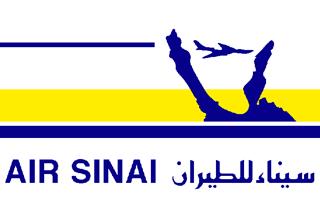

 Afghanistan
Afghanistan
 Egypt
Egypt
 Armenia
Armenia
 Azerbaijan
Azerbaijan
 Bahrain
Bahrain
 Georgia
Georgia
 Iraq
Iraq
 Iran
Iran
 Israel
Israel
 Yemen
Yemen
 Jordan
Jordan
 Katar
Katar
 Kuwait
Kuwait
 Libanon
Libanon
 Oman
Oman
 Palestine
Palestine
 Saudi Arabia
Saudi Arabia
 Syria
Syria
 Turkey
Turkey
 United Arab Emirates
United Arab Emirates
 Cyprus
Cyprus
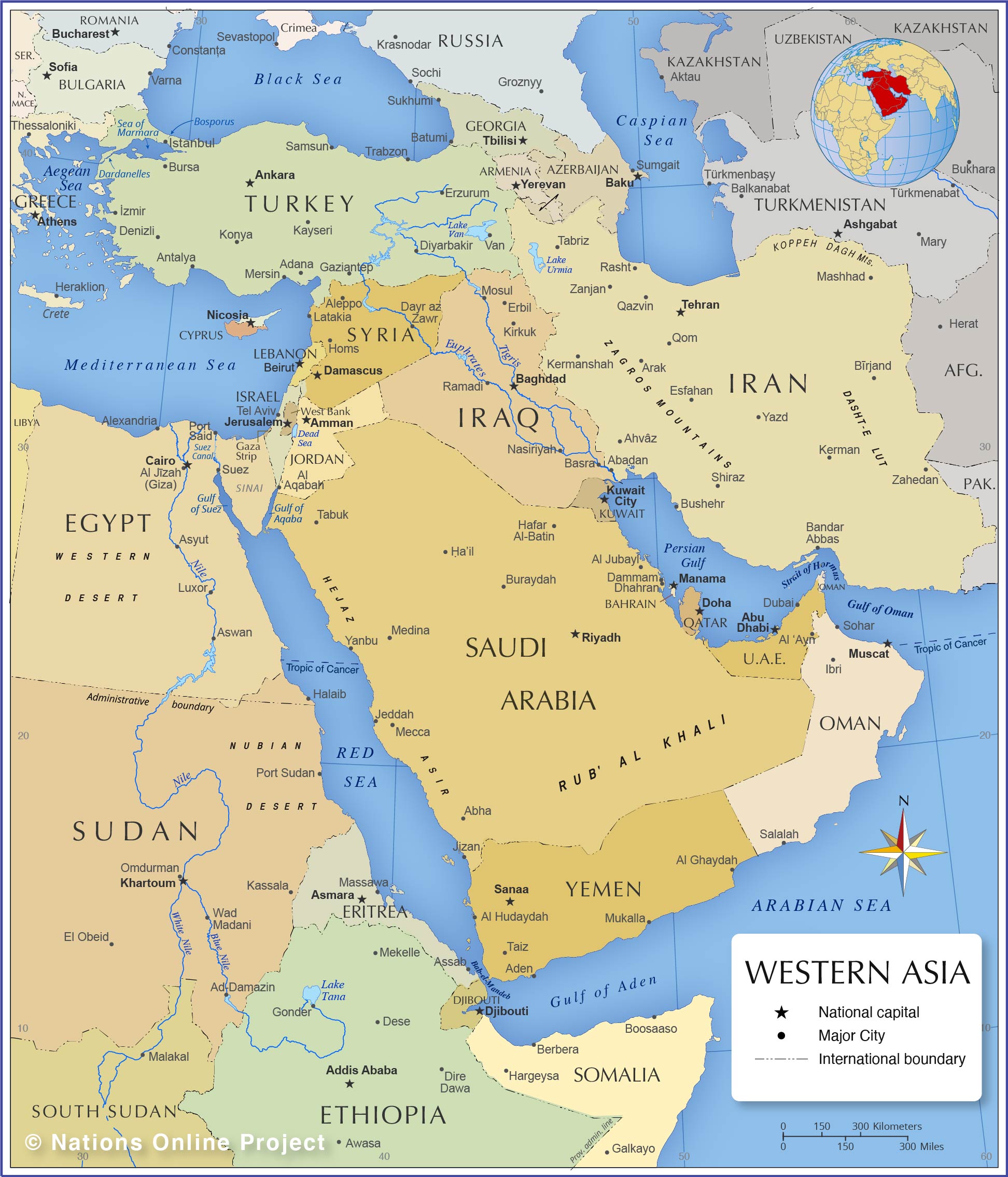
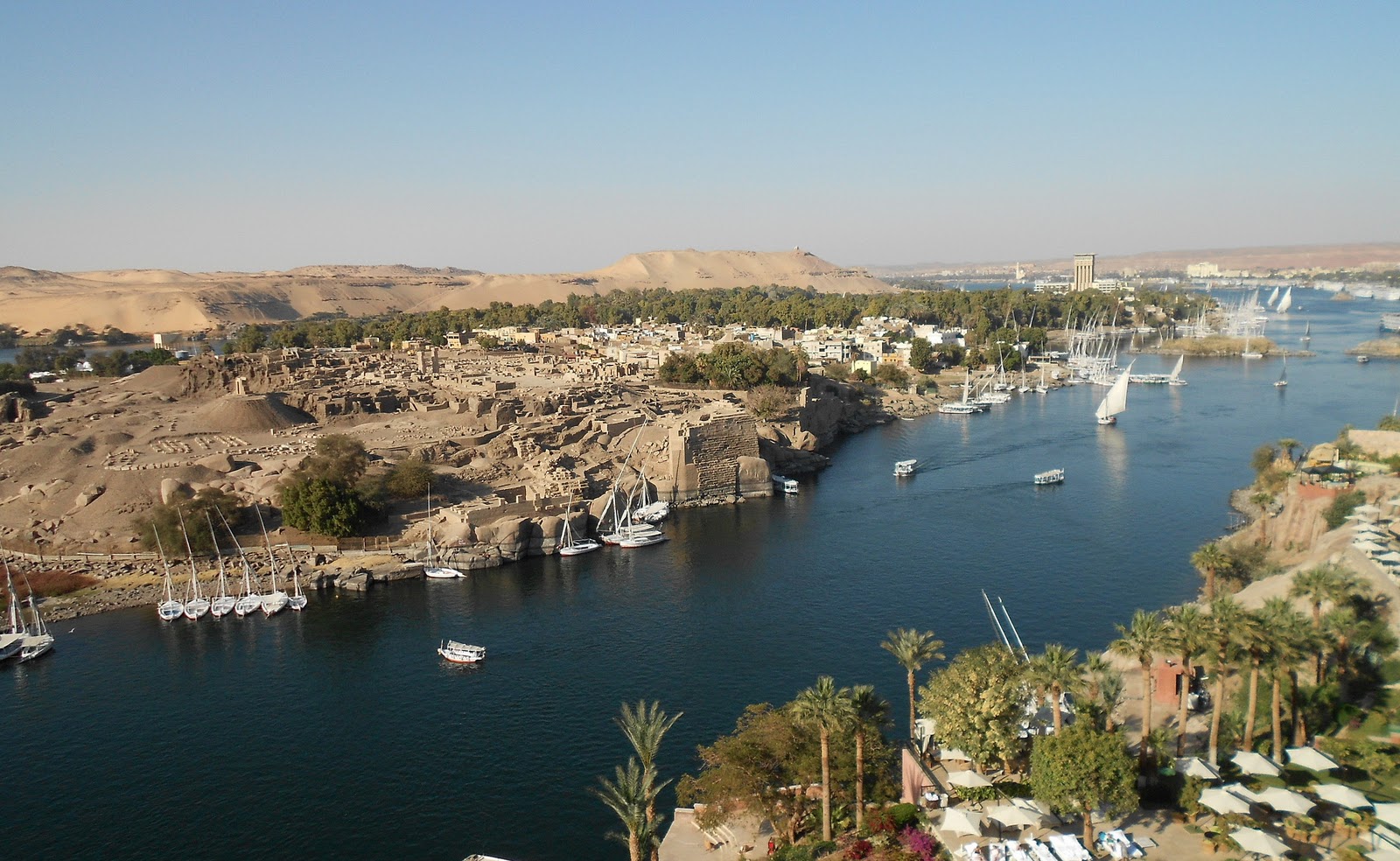

 Afghanistan
Afghanistan
 Egypt
Egypt
 Algeria
Algeria

 History
History
 K 500 - 1000 AD
K 500 - 1000 AD
 Iraq
Iraq
 Iran
Iran
 Yemen
Yemen
 Jordan
Jordan
 Katar
Katar
 Comoros
Comoros
 Libanon
Libanon
 Libya
Libya
 Malediven
Malediven
 Morocco
Morocco
 Pakistan
Pakistan

 Religion
Religion
 Islam
Islam
 Republic of the Sudan
Republic of the Sudan
 Saudi Arabia
Saudi Arabia
 Somalia
Somalia
 Syria
Syria
 Tajikistan
Tajikistan
 Tunisia
Tunisia
 Turkey
Turkey
 Uzbekistan
Uzbekistan

Verteilung muslimischer Glaubensrichtungen: Grün: sunnitische Gebiete; Rot: schiitische Gebiete; Blau: Ibaditen (Oman)
Die Sunniten bilden die größte Glaubensgruppe im Islam. Ihre Glaubensrichtung selbst wird als Sunnitentum oder Sunnismus bezeichnet. Die Bezeichnung ist von dem arabischen Wort Sunna (‚Brauch, Handlungsweise, überlieferte Norm, Tradition‘) abgeleitet. Diejenigen, die der sunnat an-nabī, der „Sunna des Propheten“ (sc. Mohammed), folgen, werden im Arabischen als ahl as-sunna („Leute der Sunna“) und im Türkischen als Ehl-i Sünnet bezeichnet, was im Deutschen üblicherweise als „Sunniten“ wiedergegeben wird. Neben ahl as-sunna wird im Arabischen auch der erweiterte Ausdruck ahl as-sunna wal-dschamāʿa (arabisch أهل السنة والجماعة, DMG ahl as-sunna wal-ǧamāʿa ‚Leute der Sunna und der Gemeinschaft‘) verwendet. Die Glaubenslehren der Sunniten werden in verschiedenen Glaubensbekenntnissen dargestellt, die sich je nach dogmatischer Ausrichtung der Autoren unterscheiden.
Heute gelten die Schiiten als die wichtigste Gegengruppe zu den Sunniten, allerdings hat sich das sunnitische Selbstbewusstsein im Mittelalter nicht nur in Absetzung zu den Schiiten, sondern auch zu den Charidschiten, Qadariten und Murdschi'iten herausgebildet. Über die Frage, welche dogmatischen Lehrrichtungen dem Sunnitentum angehören, besteht unter den muslimischen Gelehrten keine Einigkeit. Eine der wenigen internationalen Initiativen zur Klärung der sunnitischen Identität war die Sunnitenkonferenz von Grosny im August 2016. Auf ihr wurden die Takfīrī-Salafisten und andere extremistische Gruppen wie der Islamische Staat aus dem sunnitischen Islam ausgeschlossen.[1]
逊尼派(阿拉伯语:أهل السنة والجماعة,ʾAhl ūs-Sunnah wa āl-Ǧamāʿah,简称أهل السنة ʾAhl ūs-Sunnah),又译素尼派,原意为遵循圣训者,为伊斯兰教中的最大派别,自称“正统派”,与什叶派对立。一般认为,全世界大约有85~91%穆斯林隶属此派别[1][2][3]。
スンナ派(アラビア語:(أهل السنة (والجماعة 、ラテン文字転写:Ahl as-Sunnah (wa’l-Jamā‘ah))、あるいはスンニ派(日本では報道などでこちらが一般的に知られる)は、イスラム教(イスラーム)の二大宗派のひとつとされる。他のひとつはシーア派である。イスラームの各宗派間では、最大の勢力、多数派を形成する。
Sunni Islam (/ˈsuːni, ˈsʊni/) is the largest denomination of Islam, followed by 87–90% of the world's Muslims, characterized by a greater emphasis upon the prophet, the sahabah (in particular the Rashidun), and customs deduced thereof.[1][2] Its name comes from the word sunnah, referring to the behaviour of the Islamic prophet Muhammad.[3] The differences between Sunni and Shia Muslims arose from a disagreement over the succession to Muhammad and subsequently acquired broader political significance, as well as theological and juridical dimensions.[4]
According to Sunni traditions, Muhammad did not clearly designate a successor and the Muslim community acted according to his sunnah in electing his father-in-law Abu Bakr as the first caliph.[4] This contrasts with the Shia view, which holds that Muhammad announced his son-in-law and cousin Ali ibn Abi Talib as his successor, most notably at Ghadir Khumm.[5][6][7][8][9] Political tensions between Sunnis and Shias continued with varying intensity throughout Islamic history and have been exacerbated in recent times by ethnic conflicts and the rise of Wahhabism.[4]
The adherents of Sunni Islam are referred to in Arabic as ahl as-sunnah wa l-jamāʻah ("the people of the sunnah and the community") or ahl as-sunnah for short.[10][11] In English, its doctrines and practices are sometimes called Sunnism,[12] while adherents are known as Sunni Muslims, Sunnis, Sunnites and Ahlus Sunnah. Sunni Islam is sometimes referred to as "orthodox Islam",[13][14][15] though some scholars view this translation as inappropriate.[16]
The Quran, together with hadith (especially those collected in Kutub al-Sittah) and binding juristic consensus, form the basis of all traditional jurisprudence within Sunni Islam. Sharia rulings are derived from these basic sources, in conjunction with analogical reasoning, consideration of public welfare and juristic discretion, using the principles of jurisprudence developed by the traditional legal schools. In matters of creed, the Sunni tradition upholds the six pillars of iman (faith) and comprises the Ash'ari and Maturidi schools of rationalistic theology as well as the textualist school known as traditionalist theology. Sunni Islam is not a coherent line of tradition, but a consolidation of doctrines and positions worked out over time in discussions and writings.[17]
Le sunnisme1 est le principal courant religieux de l'islam représentant 90 % des musulmans du monde2. Constituant l'un des trois grands courants de l'islam avec le chiisme et le kharidjisme, le sunnisme se distingue des autres courants de l'islam par son interprétation de la religion. Les sunnites sont désignés en arabe comme les gens de la « sunna » et de la majorité religieuse (ahl al-sunna wa'l-djama‘a). Par opposition aux chiites et aux kharidjites, on les appelle parfois « musulmans orthodoxes »3.
Il sunnismo (in arabo: أهل السنة والجماعة, ahl al-sunna wa l-jamāʿa[1], "il popolo della Sunna e della Comunità") è la corrente maggioritaria dell'Islam, comprendendo circa l'85% dell'intero mondo islamico[2]. Essa riconosce la validità della Sunna (consuetudine[3], identificata coi Sei libri) e si ritiene erede della giusta interpretazione del Corano[1], articolata giuridicamente in 4 scuole o madhhab. Queste si dividono in Hanafismo, Malikismo, Sciafeismo, Hanbalismo. Mentre il cristianesimo è la maggiore religione del mondo (con 2,1 miliardi di aderenti) e l'Islam la seconda (con 1,8 miliardi), come confessioni il sunnismo (1,6 miliardi) supera il cattolicesimo (1,2 miliardi). Nell'islam, oltre al sunnismo, le principali confessioni sono rappresentate dallo Sciismo e dal Kharigismo. Sono presenti inoltre numerose forme minori (vedi denominazioni islamiche).
Nel sunnismo, così come nelle altre confessioni islamiche, ci sono divisioni interne tra i credenti sufi e coloro che rifiutano l'approccio sufico.
Los suníes1(en idioma árabe, سنّة) ʾAhlu-s-Sunnati wa-l-Jamāʿah (en árabe, أهل السنة والجماعة) son el grupo musulmán mayoritario en la comunidad islámica mundial. Su nombre procede del hecho de que, además del Corán, son devotos de la Sunna, colección de dichos y hechos atribuidos al profeta Mahoma. Aunque el Islam sunita se compone de una variedad de escuelas teológicas y legales que se desarrollaron a través de entornos históricos, localidades y culturas, los sunitas de todo el mundo comparten algunas creencias comunes: la aceptación de la legitimidad de los primeros cuatro sucesores del profeta Mahoma (Abu Bakr, Omar , Uthman y Ali), y la creencia de que otras sectas islámicas han introducido innovaciones (bidah), partiendo de la creencia mayoritaria.
Sunni Islam se desarrolló a partir de las luchas en el Islam temprano sobre el liderazgo. Las posiciones políticas y religiosas surgieron de las disputas sobre la definición de la creencia "verdadera", la libertad y el determinismo. Los sunitas tienden a rechazar el racionalismo excesivo o el intelectualismo en cuestiones de credo, centrándose en el espíritu y la intención de las fuentes primarias y utilizando argumentos racionales, cuando sea necesario, para defender la ortodoxia y refutar la herejía.23
Сунни́ты, ахль ас-су́нна ва-ль-джама‘а (от араб. أهل السنة والجماعة — «люди сунны и согласия общины») — последователи основного и наиболее многочисленного направления в исламе.
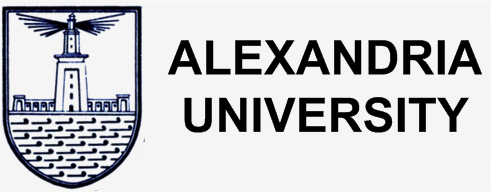

 Egypt
Egypt
 Australia
Australia
 Belgium
Belgium
 Brunei Darussalam
Brunei Darussalam
 China
China
 Germany
Germany
 Djibouti
Djibouti
 France
France
 Greece
Greece
 Guangdong Sheng-GD
Guangdong Sheng-GD
 Hongkong Tebiexingzhengqu-HK
Hongkong Tebiexingzhengqu-HK
 India
India
 Indonesia
Indonesia


 IT-Times
IT-Times
 Late Classical, Romantic (Early, Middle, Late)
Late Classical, Romantic (Early, Middle, Late)
 Italy
Italy
 Japan
Japan
 Malaysia
Malaysia
 Morocco
Morocco
 Myanmar
Myanmar
 Oman
Oman
 Pakistan
Pakistan
 Philippines
Philippines
 Portugal
Portugal
 Republic of Korea
Republic of Korea
 Saudi Arabia
Saudi Arabia
 Shanghai Shi-SH
Shanghai Shi-SH
 Singapore
Singapore
 Singapore
Singapore
 Sri Lanka
Sri Lanka
 Taiwan Sheng-TW
Taiwan Sheng-TW
 Thailand
Thailand
 Turkey
Turkey
 United Arab Emirates
United Arab Emirates
 United Kingdom
United Kingdom
 Vietnam
Vietnam
 Cyprus
Cyprus
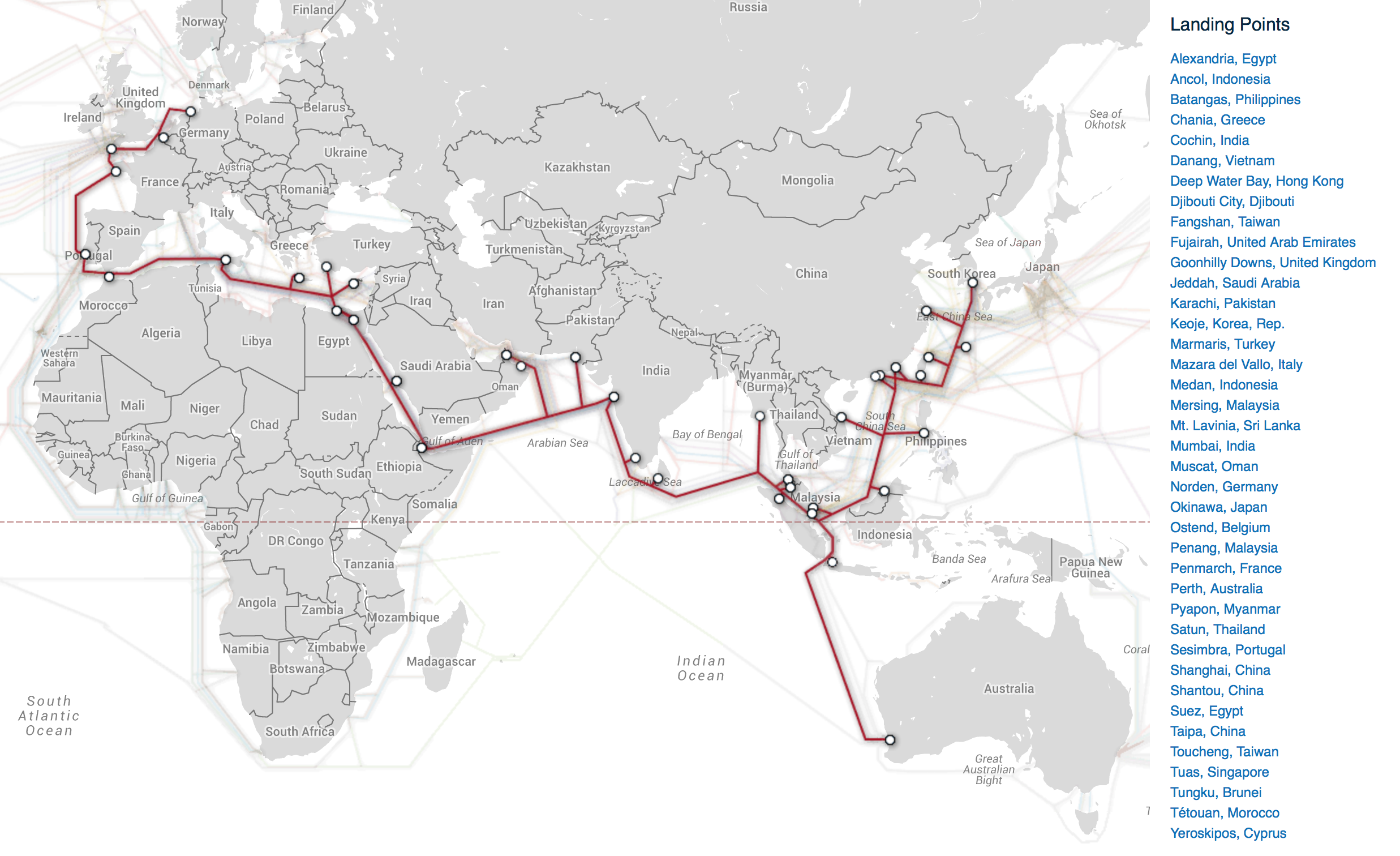
 International cities
International cities
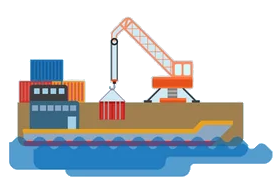 Important port
Important port
 Geography
Geography
 Transport and traffic
Transport and traffic
 Companies
Companies